- Home
- Tom Clancy
Into the Storm: On the Ground in Iraq sic-1 Page 8
Into the Storm: On the Ground in Iraq sic-1 Read online
Page 8
COMMAND STYLE
Commanders have different command styles. If you spend any significant amount of time around Army people, you're going to encounter no little commentary about these differences. There is no right way to command, no template out of which commanders are stamped. Some commanders — to point out the more visible of differences — are loud, physically dominant extroverts; others are quieter, more soft-spoken, more given to indirection. Such opposites can be equally effective as commanders.
Grail Brookshire was a soldier's soldier, six foot one, 180 pounds, and sharp featured. When he spoke, his voice was clear and loud. When he reinforced a point, he was usually profane. Before taking over 2nd Squadron, he had been the regimental S-3, and knew the regiment's operations. At 2nd Squadron, he was technically skillful, and very aggressive: he took the fight to the enemy. Brookshire had a special affinity for tactics and a finely tuned sense for a fight. And he was always at the right place to conduct it. Simultaneously orchestrating ground maneuver elements, artillery, Army air, and Air Force air came naturally to him. (This "coming naturally" was a result of long study and practice.) As a complement to his tactical skills, he knew soldiers, what made them tick and what would inspire them to push their own edge. He believed in tight discipline and technical competence. But he also liked to stay out with frontline troops, working with them and sharing their hardships. And Brookshire liked to communicate with his subordinates. He liked to talk with them, to ask and take their opinions. He was a master at creating and building teamwork in a combat unit.
Franks and Brookshire took to each other as soon as they met. Their leadership styles and personal styles instantly meshed. Though Franks and Brookshire had never worked together until 2nd Squadron, it wasn't long before they built under fire a close working relationship. This grew into a close friendship, based on shared hardships and dangers, and shared concern for soldiers, this in spite of very different personal styles. Brookshire was boisterous, profane, and very direct. Franks was more quiet and soft-spoken, with a deep inner intensity, but also direct and profane when the situation called for it. They talked long and often, exchanging ideas about how to conduct a fight. And they both smoked cigars, a habit Franks had begun in the 11th Cavalry as a platoon leader. Together they developed a natural and comfortable working groove. Before long, it all became natural and instinctive.
On 7 December there was a regimental change of command, when Colonel Donn Starry took command of the 11th ACR from Colonel Jimmie Leach.[5] Though he and Franks did not then know each other, the relationship that developed between them turned out to be as lasting as the one between Franks and Brookshire. For one thing, in May, in Cambodia, Donn Starry saved Franks's life. And later, back home in the States, they would work together again.
Most commanders are intelligent people. Not all of these intelligent people are smart commanders. That is to say, not all of these people make the best decisions for their commands.
Out of these intelligent people, most are readers (usually of history and military history); most also, these days, have earned advanced, professional degrees (I've met three-star lieutenant generals with Ph.D.'s); and some few are intellectuals. These will make a contribution during their career to the way the Army thinks about itself and its missions, both strategic and tactical. Donn Starry was one of the Army intellectuals, and so, it turned out, was Fred Franks. The relationship between Fred Franks and Donn Starry that began in the jungles near the Cambodian border would continue on into TRADOC. Part, at least, of the contribution Franks was eventually to make to the Army built upon the foundation that Donn Starry had constructed in the 1970s and 1980s, when he commanded first the Armor Center at Fort Knox and then TRADOC, the Training and Doctrine Command.
Starry's command methods inspired fierce loyalty in his subordinates. He always talked to and listened to soldiers and subordinate commanders. He also led from out front. He shared the dangers.
From the beginning, you never doubted that he was in charge. You always knew he was there and aware of what you were doing. He would monitor your combat actions on the radio, but usually broke in only when you needed something or when he could help in some way. He would meet you almost every day at your location. He didn't send for people to come see him; he'd go to them. When there was an action, he liked to stay with the lead squadron, and not in the rear at his command post, but otherwise, he left you pretty much to run your own show. As long as you were operating within his intent, he didn't intrude much into your business.
Starry encouraged and demanded initiative. He valued those commanders and others who could "orchestrate" a battle. You came to realize that nonjudgmental listening and focused questioning were major facets of his command technique. (Listening to your subordinates, without jumping in with comments, observations, or directives, is a good way to find out what is actually going on in a unit.) Starry certainly had a very good idea what he wanted done, but he would lead people to find that on their own, as though they themselves had discovered it. He would do that by asking questions and pointing out relevant facts and issues. If his subordinates still missed seeing what he saw — if they needed, say, to add an element to a plan — he would ask a question that would indicate that… or, if it came to that, he would interrupt and directly make himself clear. Otherwise, he'd listen. He was a commander's commander.
Starry also valued noncommissioned officers. He and his Command Sergeant, Major Don Horn, were inseparable. Horn was a wise senior NCO, with a lot of combat and soldier tactical savvy. When Horn had something to say on one of Starry's visits, Franks listened.
Fred Franks has always been a sensible, creative, intelligent leader. He always thinks ahead. You have to think ahead if you're going to fight at the highest pitch of violence at the least cost to your troops. But that's not the entire Fred Franks.
Sometimes your intuitive sense lets you go on instinct and get lucky in combat, and you have to leave room for that. But you have to pick your spots.
North of An Loc, and in War Zone C, he and his crew used to set the Loach down near recently bombed NVA bunkers or B-52 strikes in order to obtain accurate BDAs or to pick up POWs or captured documents from squadron troops on the ground. The Air Force liked accurate BDAs; they showed how well they were doing their job. Getting BDAs on the ground was the only way to ensure accuracy; but doing that was a little mad. On the other hand, in exchange for accurate BDAs, the Air Force took special care of 2nd Squadron when they needed TAC air. Young Major Franks thought that was worth the risk. But it was not risk free. Franks and his crew would go down four times in their Loach, twice from enemy fire.
The first day they were in War Zone C, he was flying observation in his Loach along the border with Cambodia when he spotted North Vietnamese earthen bunkers. He called in air. Some Cobras dived in, and the North Vietnamese scattered. Then Franks noticed a pair of rucksacks on the ground, apparently dropped in a clearing near one of the bunkers, now deserted. The NVA infantry that had manned it were at the moment running for their lives toward the Cambodian border, a short distance away. On the chance that the rucksacks might contain valuable intelligence, and ignoring the strong possibility that they were booby-trapped or that the NVA were still around, he wanted to land and get them. Because they were all in it together, Franks asked Doug Farfel, who was flying the helicopter, and John Lamontia, his crew chief, if they'd be willing to go down to pick them up. They agreed it was worth the risk.
The Loach set down and, with Franks covering him, and Captain Carl Marshall circling close above in his Cobra gunship, Lamontia raced out and snatched the two rucksacks. After Lamontia returned to the Loach, an NVA soldier appeared, refused to surrender, and tore off toward other NVA bunkers that were visible through the trees. Since Franks and his crew didn't know what this soldier was planning to do or if anyone was in the bunkers, and since they wanted to get the hell out of there, Lamontia dropped the NVA soldier with his M-60 machine gun and suppressed the enemy in the bunk
ers. Then they got the hell out of there.
The snatch proved valuable. One of the rucksacks contained a detailed map showing infiltration and resupply routes through War Zone C, as well as unit identification. This map was immensely useful to 2nd Squadron and allowed them to set numerous ambushes along those trails.
Later the next day, Brigadier General George Casey, the assistant division commander of the 1st Cavalry Division, on one of his many visits to the regiment, visited Franks, Farfel, and Lamontia in an informal ceremony. "Franks," he said, "I don't know whether to court-martial you for stupidity or pin a medal on all of you for what you did out there. I guess because it turned out OK, I'll pin a medal on you all. That's the spirit of the cavalry we want. That's what the cavalry's all about — out in front."
Two months later, at the end of April, the Blackhorse was out in front again. They were going into Cambodia. Second Squadron would lead.
CHAPTER THREE
Cambodia
Going into Cambodia made sense. If Vietnamization was to work, then the United States had to buy time for the South Vietnamese, so they could grow stronger and take over the war. General Creighton Abrams, MACV commander, planned the spoiling attack into Cambodia to give them that time. The NVA sanctuary there had to be destroyed — up to now, it had been off limits — the enormous stores of arms and supplies and all the other NVA infrastructure near the border had to be captured or eliminated; and the NVA themselves had to be killed or taken prisoner, or else pushed back and kept back.
When Brookshire learned they were to go in, he and Franks put a plan together in less than forty-eight hours—far less time than the weeks it took to plan VII Corps's attack into Iraq twenty years later. There were other differences.
The squadron had about 900 soldiers and maybe 200 vehicles in a zone about fifteen kilometers wide. VII Corps had 146,000 soldiers and close to 50,000 vehicles in a sector 120 kilometers wide and over 250 kilometers deep. Both missions were force-oriented, with terrain as a guide, and for both, the mission was to destroy the enemy in zone. In Iraq, however, they had better intelligence about specific enemy locations — Franks does not recall any intelligence that was accurate in pinning down enemy locations in Cambodia, except around Snoul. But they knew their enemy well when they went into Cambodia. They had fought him for a long time. Their enemy knew them as well. It was not like that in Iraq at the beginning.
The squadron mission was straightforward: 2nd Squadron would lead the 11th Cavalry units, as part of Task Force Shoemaker, and formed of units of the 1st CAV Division and the 11th ACR. They would attack into the Fishhook (just north of War Zone C) and move quickly to Cambodian Highway 7, and on the third day, the plan was to attack up the highway to the town of Snoul, a rubber plantation town and provincial capital of a size and importance comparable to An Loc, on the Vietnamese side of the border. Along the way they would seek out and destroy North Vietnamese supplies and units, and especially the large cache that was thought to be near Snoul. Intelligence additionally believed that a major NVA headquarters was located in the area.
In technical Army talk, this was to be a tactical reconnaissance in force, with some meeting engagements toward a specific terrain and enemy at some distance, all within the larger operational framework of a spoiling attack. By contrast, the mission in War Zone C had been a security and interdict operation over a specific piece of terrain. In War Zone C, the mission was similar to the 11th CAV's role in Germany facing the Warsaw Pact: to screen the border and barrier interdiction, a traditional cavalry operation. The operation into Cambodia was no less traditional: to penetrate quick and hard.
The territory between War Zone C and Snoul was a mixture of grassy savanna-like lowlands and somewhat higher ridgelines of iron-rich, clayey soil along which the rubber plantations were situated. One of these ridges ran from Snoul through Loc Ninh to An Loc. Highway 7 ran along another extension of this ridge. The tactical problem was this: if you wanted to attack toward Snoul, you couldn't move through the savannas; they were too boggy. You had to follow the ridgeline, and thus were forced into a predictable corridor where setting up defenses and ambushes was much easier for the North Vietnamese.
The other planning problems were more immediate. War Zone C was vastly different from the part of Cambodia they were entering. War Zone C was mostly empty of people, and except for the areas defoliated by Agent Orange, it was heavily covered by tall, triple-canopy rain forest. In Cambodia, once the squadron reached Highway 7, they would run into a large number of civilians and all the infrastructure of civilian life: villages, poles and wires for phones and electricity, trucks, cars, buses, bicycles, normal commerce — none of which they had seen much since they were near An Loc or Loc Ninh. For the past weeks, they had been operating under rules of engagement that did not take into account the presence of civilians. Cambodia was different. As it happened, Cambodian civilians proved to be naturally friendly and helpful to Americans. The North Vietnamese had been there for some time now, and the Cambodians seemed glad to see our soldiers coming in and running the NVA out.
Logistics was going to have to involve helicopters. The regiment had many gas- and diesel-guzzling vehicles to be fed. Fuel and supply trucks could come up from C on a few roads and trails, but it made more sense to bring in most of what they needed by air. Typically, the squadron would operate during the day and draw up into semi-defensive laagers at night. Helicopters would bring in large fuel bladders and drop these down near the laagers. The tanks and other vehicles would then line up to refuel just like at a filling station. There was never a scarcity of fuel during the Cambodian invasion.
With these elements under control, the rest of the planning was relatively straightforward. Devising an operation for a squadron does not take long, and they were a veteran team. It was a matter of asking and answering questions such as "How are we going to attack? What kind of alignment are we getting into? How do we arrange the corridors for moving the squadron from their interdiction mission in C to their attack positions for driving into Cambodia?" And: "Will our fire support keep up with us? Or will we outrun it?" On the plus side, they would have far more indirect fires available than they were used to, both from artillery and from TAC air. They even got some naval air, flying off carriers. In consequence, Franks had to devote serious planning to managing the amount of close air support available.
On April 30, just south of the Cambodian border, Brookshire called in the troop commanders to brief them about the structure of the mission and the tactics of their attack across the border. It was a simple scheme of maneuver. They would initially go in column, then spread the three cavalry troops across the sector, each with its own zone, to move toward Highway 7. Once there, they would advance on the road, with cavalry troops on either side of the road heading toward Snoul. When they got to Snoul, they would decide how to attack from there. Second Squadron, with Brookshire commanding and Franks as S-3, was the lead squadron.
By then, all the troop commanders were veterans. The squadron's string of tactical successes had driven morale high and confidence even higher. They were good, and the troops knew it. So did the NVA, Franks suspected. By this time, he had been the S-3 for more than eight months. Brookshire had stayed in command longer than the normal six months' tour. Some of the troop commanders also had been there longer than the normal six months. Starry encouraged that. Franks suspected it was because he disagreed with the six-month-and-out policy for commanders and others in key positions, because it broke the teamwork so necessary in combat. Their senior NCOs were strong. Teamwork in the squadron was almost automatic, without a lot of talk. The squadron command radio frequency was incredibly crisp and free of any useless chatter. Everyone realized the importance in battle of a disciplined radio frequency. Franks had never felt as close to any organization or group of soldiers as he was then. It was real family.
It was also intensely personal by that time. His driver, Specialist Ray Williams, had been killed in action on April 8 while going
back to help a fellow soldier, CSM Burkett. Franks had written in a letter to Denise, "The real blow of the whole action was that my driver was killed… " Burkett lost an arm. Earlier in the month, First Sergeant Willie Johnson of Troop F also had been killed in action.
During the squadron's final preparations, Donn Starry showed up at the squadron command post and announced that he wanted to go in with them — the lead squadron — and that he needed a vehicle. They found him a command ACAV. But the vehicle they found for him immediately threw a track, so he had to get off that and climb aboard Fred Franks's vehicle. Franks stayed in his ACAV the first two days of the operation.
On 1 May, at 0730, they moved into Cambodia through a marsh they called the Pig Path. Because the weather had been dry recently, the marsh didn't prove to be as difficult a passage as the leaders thought. In fact, the skies remained clear throughout the Cambodia operation.
During the next four days, there were several heated incidents, but they did not make major contact with the enemy until they reached Snoul. The NVA, knocked off balance by the invasion, were not eager to make a stand until they could pull themselves together. Time and again on the way to Snoul, troops came across abandoned NVA positions and caches. The attack had yielded sizable results toward its spoiling attack objective.
Second Squadron pushed on, rapidly improvising crossings over bridges the NVA had destroyed, until they reached the neighborhood of Snoul. On the evening of 4 May, they were in a laager five kilometers from the town. It was clear that evening that the NVA had stopped running. Snoul was for them a vital supply area and force concentration. They would make their stand there. They'd fight there, no matter what it cost them.

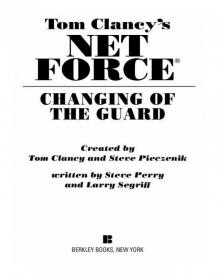 Changing of the Guard
Changing of the Guard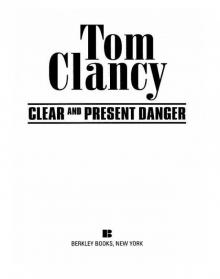 Clear and Present Danger
Clear and Present Danger Hounds of Rome
Hounds of Rome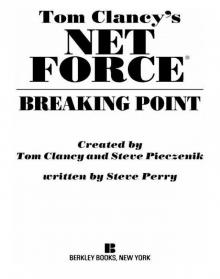 Breaking Point
Breaking Point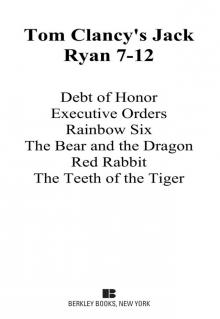 Tom Clancy's Jack Ryan Books 7-12
Tom Clancy's Jack Ryan Books 7-12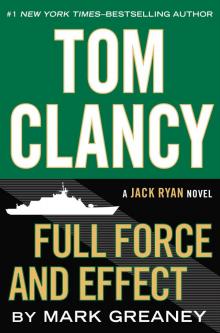 Full Force and Effect
Full Force and Effect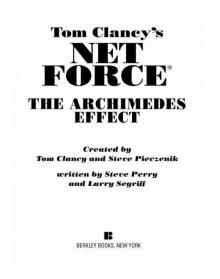 The Archimedes Effect
The Archimedes Effect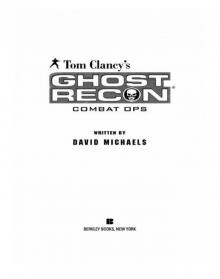 Combat Ops
Combat Ops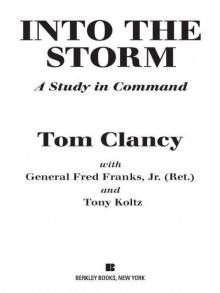 Into the Storm: On the Ground in Iraq
Into the Storm: On the Ground in Iraq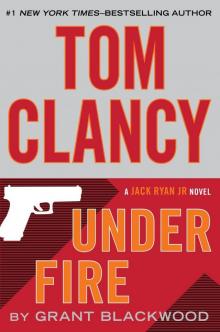 Under Fire
Under Fire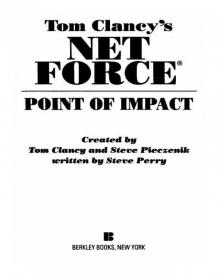 Point of Impact
Point of Impact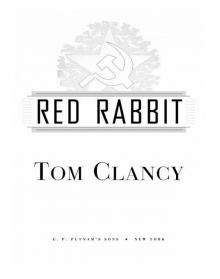 Red Rabbit
Red Rabbit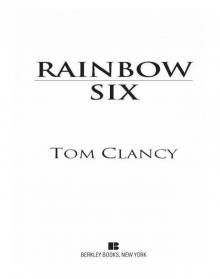 Rainbow Six
Rainbow Six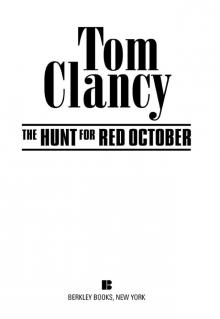 The Hunt for Red October
The Hunt for Red October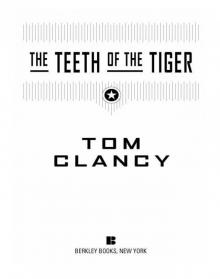 The Teeth of the Tiger
The Teeth of the Tiger Conviction (2009)
Conviction (2009)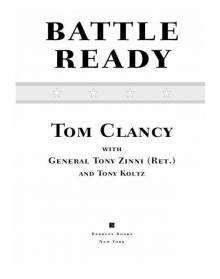 Battle Ready
Battle Ready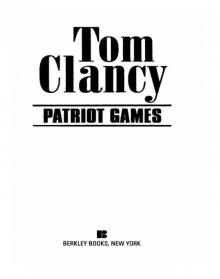 Patriot Games
Patriot Games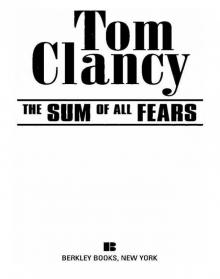 The Sum of All Fears
The Sum of All Fears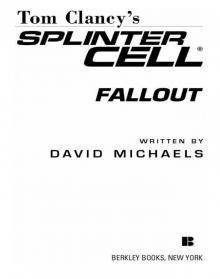 Fallout (2007)
Fallout (2007)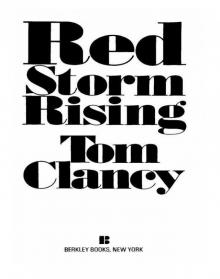 Red Storm Rising
Red Storm Rising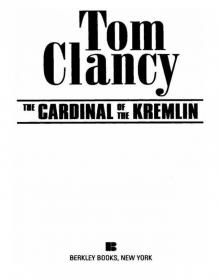 The Cardinal of the Kremlin
The Cardinal of the Kremlin Executive Orders
Executive Orders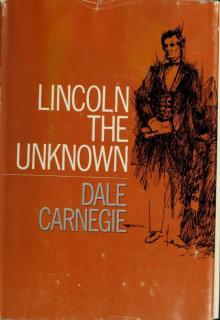 Lincoln, the unknown
Lincoln, the unknown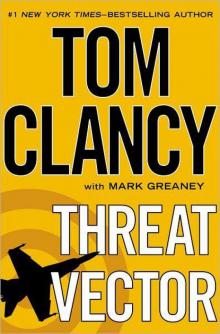 Threat Vector
Threat Vector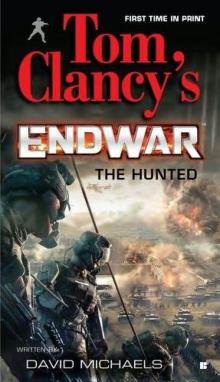 The Hunted
The Hunted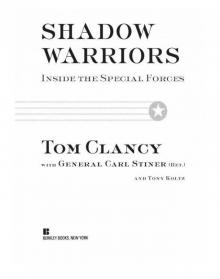 Shadow Warriors: Inside the Special Forces
Shadow Warriors: Inside the Special Forces End Game
End Game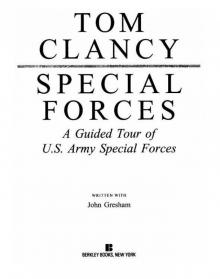 Special Forces: A Guided Tour of U.S. Army Special Forces
Special Forces: A Guided Tour of U.S. Army Special Forces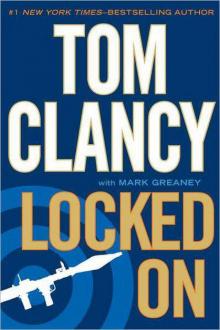 Locked On
Locked On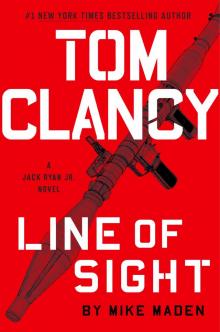 Line of Sight
Line of Sight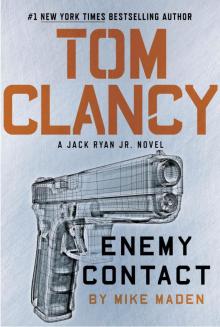 Tom Clancy Enemy Contact - Mike Maden
Tom Clancy Enemy Contact - Mike Maden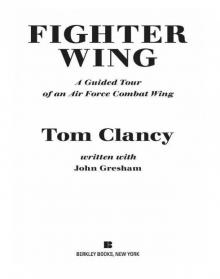 Fighter Wing: A Guided Tour of an Air Force Combat Wing
Fighter Wing: A Guided Tour of an Air Force Combat Wing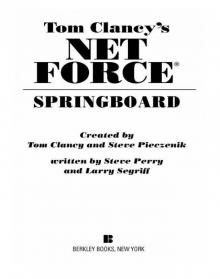 Springboard
Springboard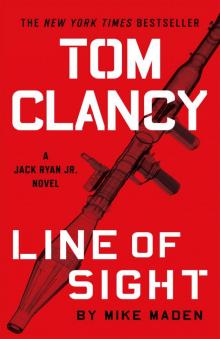 Line of Sight - Mike Maden
Line of Sight - Mike Maden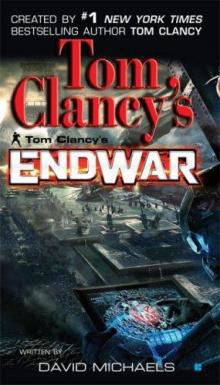 EndWar
EndWar Dead or Alive
Dead or Alive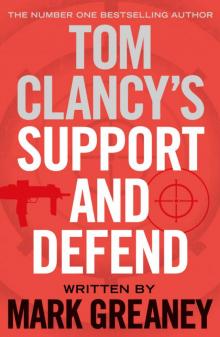 Tom Clancy Support and Defend
Tom Clancy Support and Defend Checkmate
Checkmate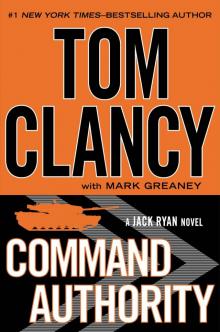 Command Authority
Command Authority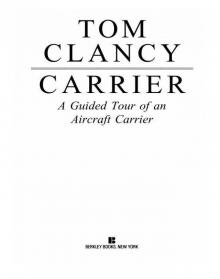 Carrier: A Guided Tour of an Aircraft Carrier
Carrier: A Guided Tour of an Aircraft Carrier Blacklist Aftermath
Blacklist Aftermath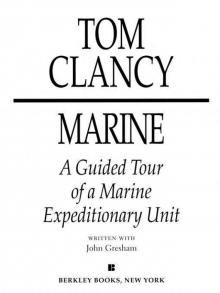 Marine: A Guided Tour of a Marine Expeditionary Unit
Marine: A Guided Tour of a Marine Expeditionary Unit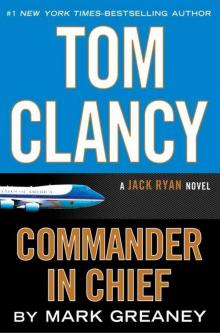 Commander-In-Chief
Commander-In-Chief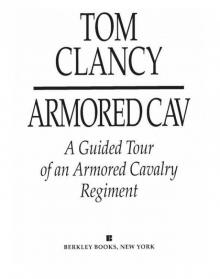 Armored Cav: A Guided Tour of an Armored Cavalry Regiment
Armored Cav: A Guided Tour of an Armored Cavalry Regiment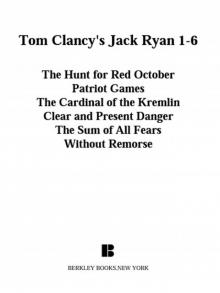 Tom Clancy's Jack Ryan Books 1-6
Tom Clancy's Jack Ryan Books 1-6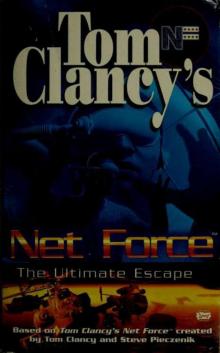 The Ultimate Escape
The Ultimate Escape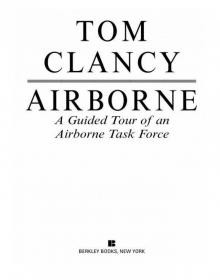 Airborne: A Guided Tour of an Airborne Task Force
Airborne: A Guided Tour of an Airborne Task Force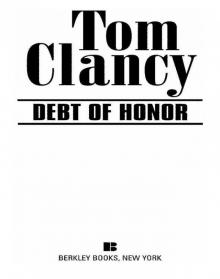 Debt of Honor
Debt of Honor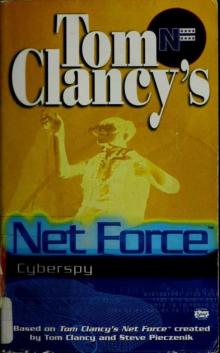 Cyberspy
Cyberspy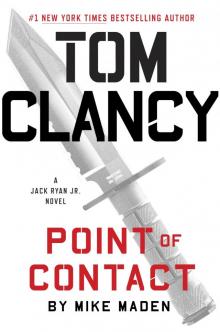 Point of Contact
Point of Contact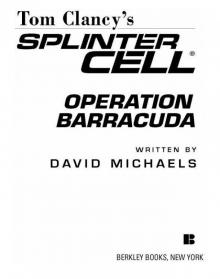 Operation Barracuda (2005)
Operation Barracuda (2005)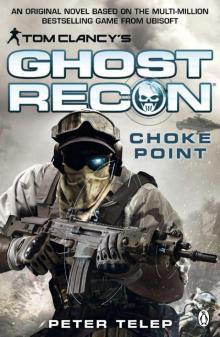 Choke Point
Choke Point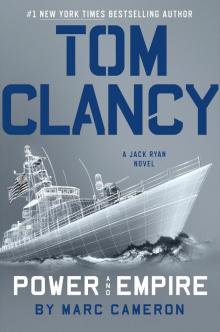 Power and Empire
Power and Empire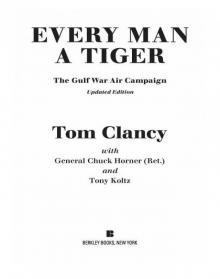 Every Man a Tiger: The Gulf War Air Campaign
Every Man a Tiger: The Gulf War Air Campaign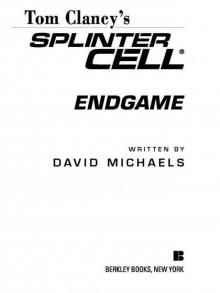 Endgame (1998)
Endgame (1998)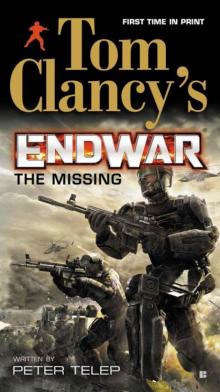 EndWar: The Missing
EndWar: The Missing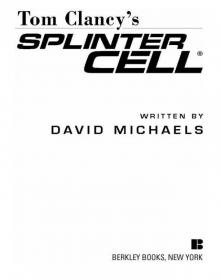 Splinter Cell (2004)
Splinter Cell (2004)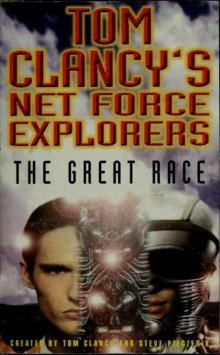 The Great Race
The Great Race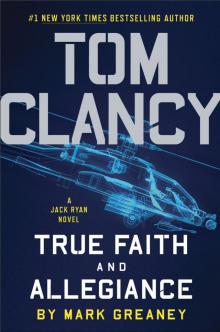 True Faith and Allegiance
True Faith and Allegiance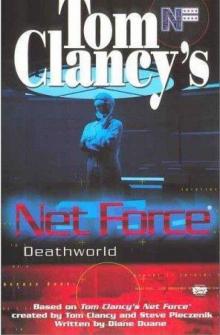 Deathworld
Deathworld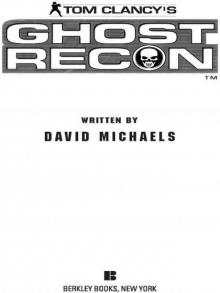 Ghost Recon (2008)
Ghost Recon (2008)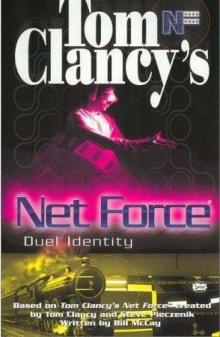 Duel Identity
Duel Identity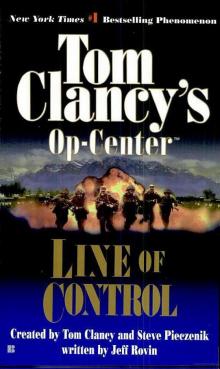 Line of Control o-8
Line of Control o-8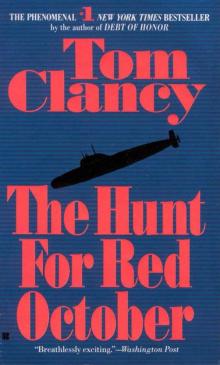 The Hunt for Red October jr-3
The Hunt for Red October jr-3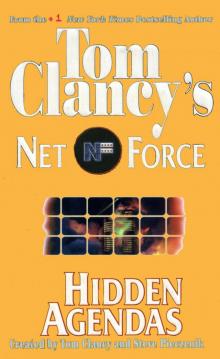 Hidden Agendas nf-2
Hidden Agendas nf-2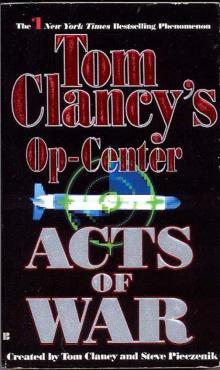 Acts of War oc-4
Acts of War oc-4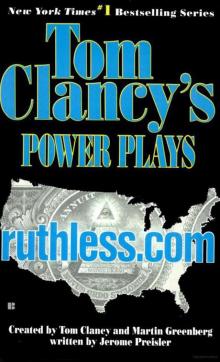 Ruthless.Com pp-2
Ruthless.Com pp-2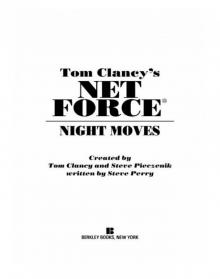 Night Moves
Night Moves The Hounds of Rome - Mystery of a Fugitive Priest
The Hounds of Rome - Mystery of a Fugitive Priest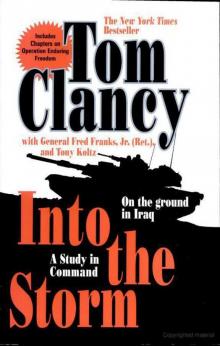 Into the Storm: On the Ground in Iraq sic-1
Into the Storm: On the Ground in Iraq sic-1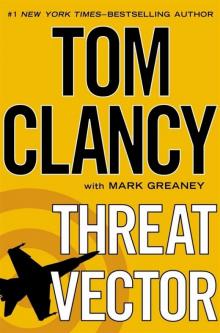 Threat Vector jrj-4
Threat Vector jrj-4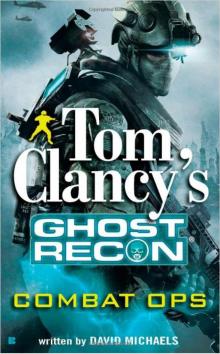 Combat Ops gr-2
Combat Ops gr-2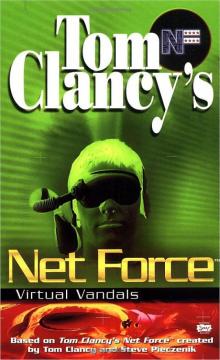 Virtual Vandals nfe-1
Virtual Vandals nfe-1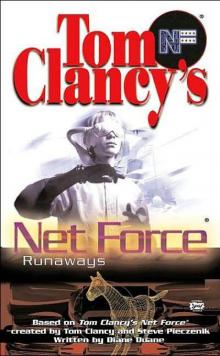 Runaways nfe-16
Runaways nfe-16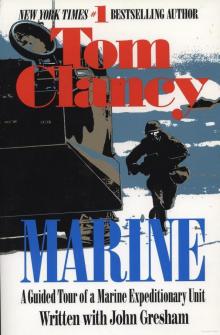 Marine: A Guided Tour of a Marine Expeditionary Unit tcml-4
Marine: A Guided Tour of a Marine Expeditionary Unit tcml-4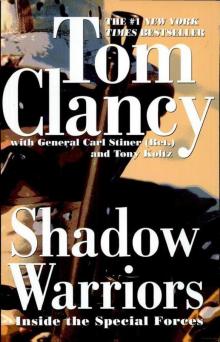 Shadow Warriors: Inside the Special Forces sic-3
Shadow Warriors: Inside the Special Forces sic-3 Jack Ryan Books 1-6
Jack Ryan Books 1-6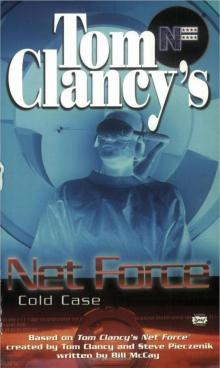 Cold Case nfe-15
Cold Case nfe-15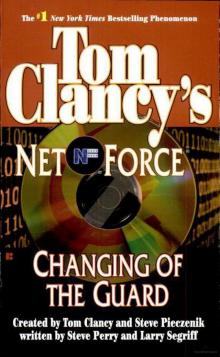 Changing of the Guard nf-8
Changing of the Guard nf-8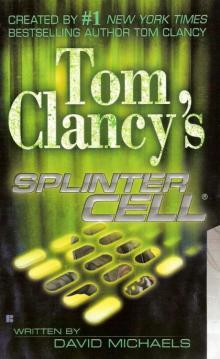 Splinter Cell sc-1
Splinter Cell sc-1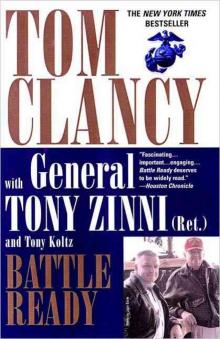 Battle Ready sic-4
Battle Ready sic-4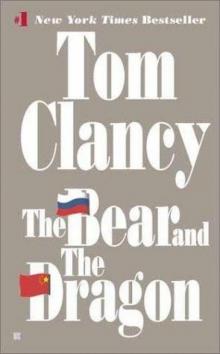 The Bear and the Dragon jrao-11
The Bear and the Dragon jrao-11 Fighter Wing: A Guided Tour of an Air Force Combat Wing tcml-3
Fighter Wing: A Guided Tour of an Air Force Combat Wing tcml-3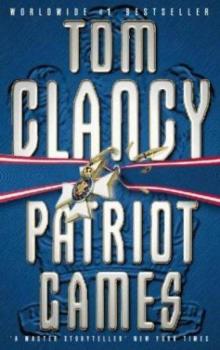 Patriot Games jr-1
Patriot Games jr-1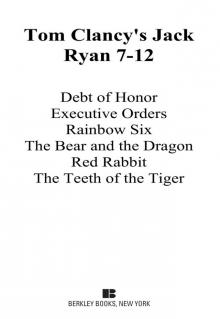 Jack Ryan Books 7-12
Jack Ryan Books 7-12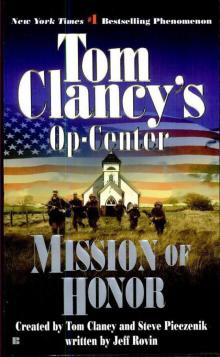 Mission of Honor o-9
Mission of Honor o-9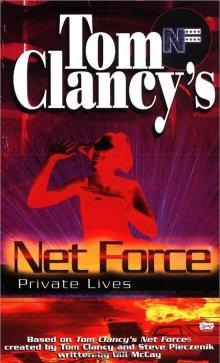 Private Lives nfe-9
Private Lives nfe-9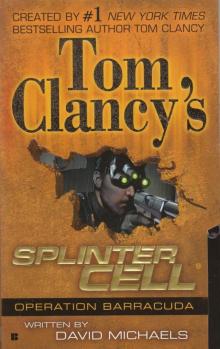 Operation Barracuda sc-2
Operation Barracuda sc-2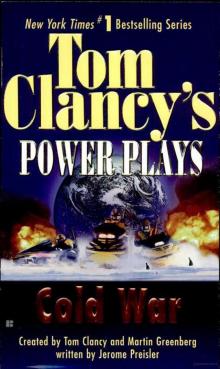 Cold War pp-5
Cold War pp-5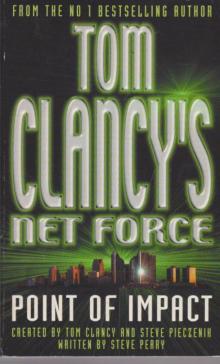 Point of Impact nf-5
Point of Impact nf-5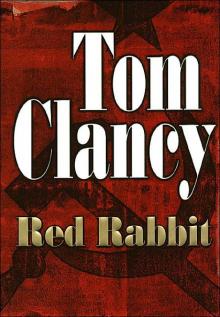 Red Rabbit jr-9
Red Rabbit jr-9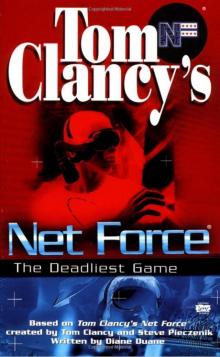 The Deadliest Game nfe-2
The Deadliest Game nfe-2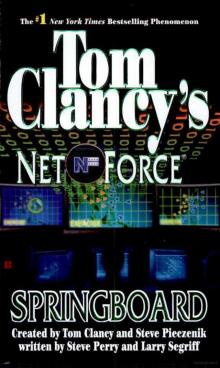 Springboard nf-9
Springboard nf-9 Safe House nfe-10
Safe House nfe-10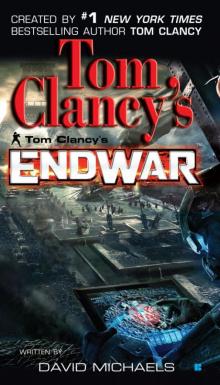 EndWar e-1
EndWar e-1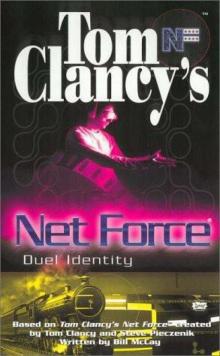 Duel Identity nfe-12
Duel Identity nfe-12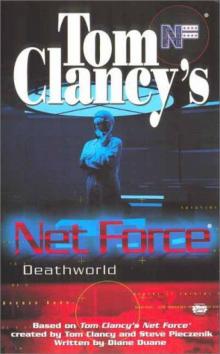 Deathworld nfe-13
Deathworld nfe-13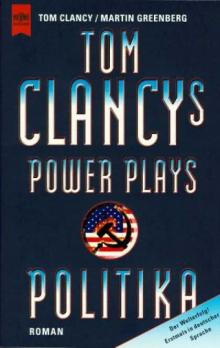 Politika pp-1
Politika pp-1 Rainbow Six jr-9
Rainbow Six jr-9 Tom Clancy's Power Plays 1 - 4
Tom Clancy's Power Plays 1 - 4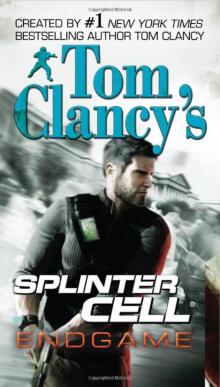 Endgame sc-6
Endgame sc-6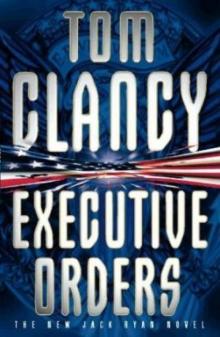 Executive Orders jr-7
Executive Orders jr-7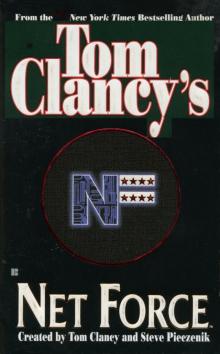 Net Force nf-1
Net Force nf-1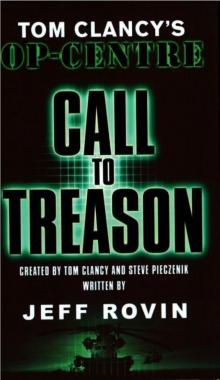 Call to Treason o-11
Call to Treason o-11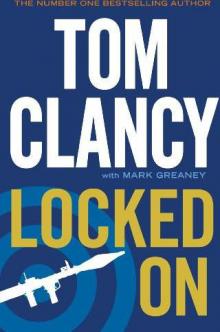 Locked On jrj-3
Locked On jrj-3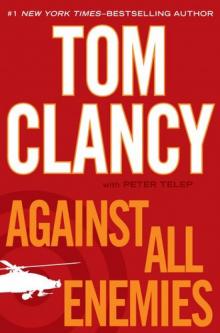 Against All Enemies
Against All Enemies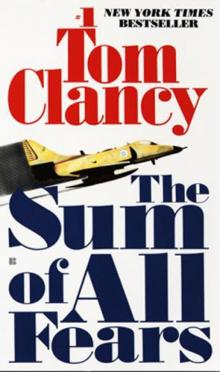 The Sum of All Fears jr-7
The Sum of All Fears jr-7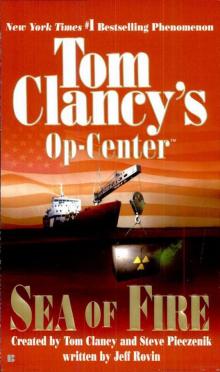 Sea of Fire o-10
Sea of Fire o-10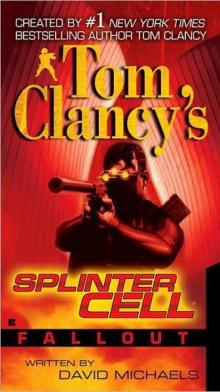 Fallout sc-4
Fallout sc-4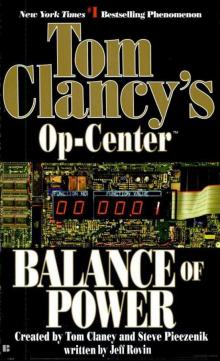 Balance of Power o-5
Balance of Power o-5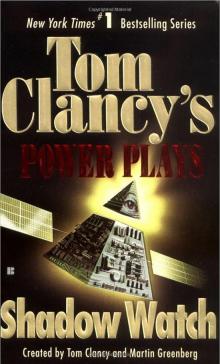 Shadow Watch pp-3
Shadow Watch pp-3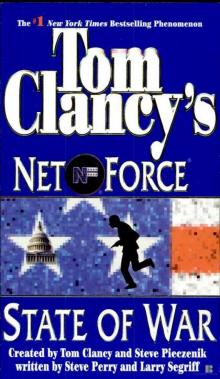 State of War nf-7
State of War nf-7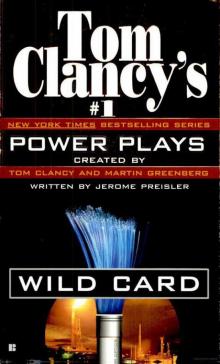 Wild Card pp-8
Wild Card pp-8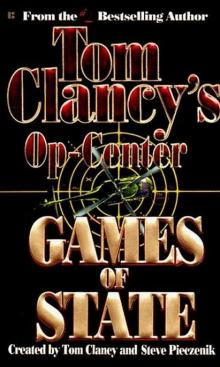 Games of State o-3
Games of State o-3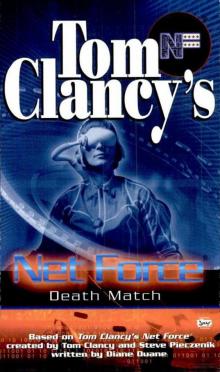 Death Match nfe-18
Death Match nfe-18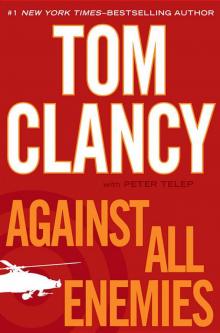 Against All Enemies mm-1
Against All Enemies mm-1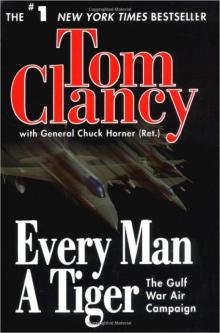 Every Man a Tiger: The Gulf War Air Campaign sic-2
Every Man a Tiger: The Gulf War Air Campaign sic-2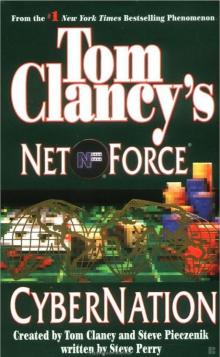 Cybernation nf-6
Cybernation nf-6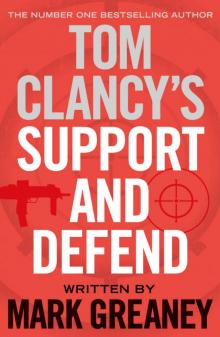 Support and Defend
Support and Defend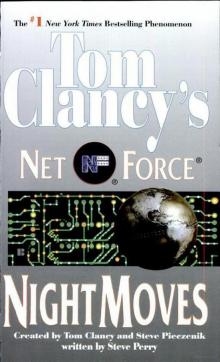 Night Moves nf-3
Night Moves nf-3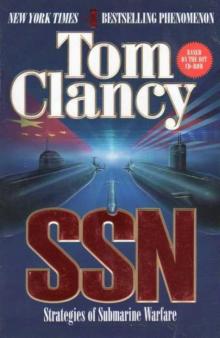 SSN
SSN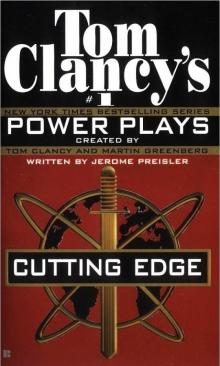 Cutting Edge pp-6
Cutting Edge pp-6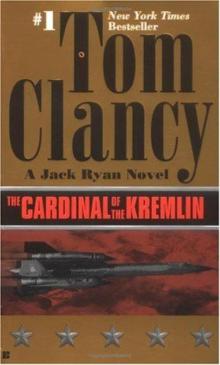 The Cardinal of the Kremlin jrao-5
The Cardinal of the Kremlin jrao-5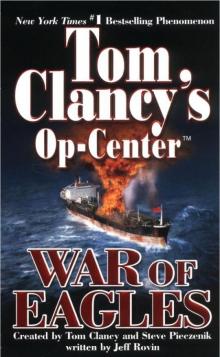 War of Eagles o-12
War of Eagles o-12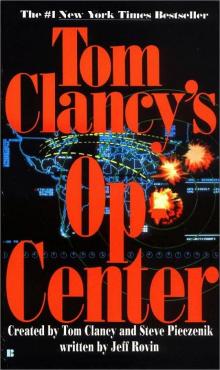 Op-Center o-1
Op-Center o-1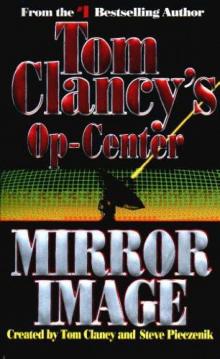 Mirror Image o-2
Mirror Image o-2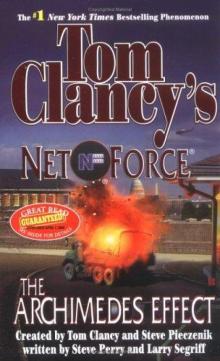 The Archimedes Effect nf-10
The Archimedes Effect nf-10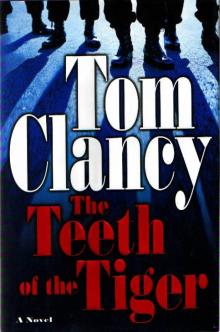 Teeth of the Tiger jrj-1
Teeth of the Tiger jrj-1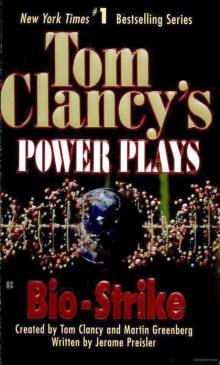 Bio-Strike pp-4
Bio-Strike pp-4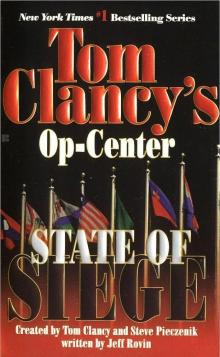 State of Siege o-6
State of Siege o-6 Debt of Honor jr-6
Debt of Honor jr-6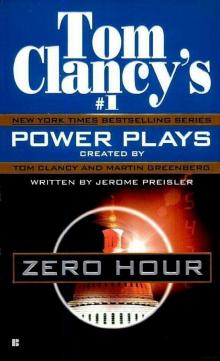 Zero Hour pp-7
Zero Hour pp-7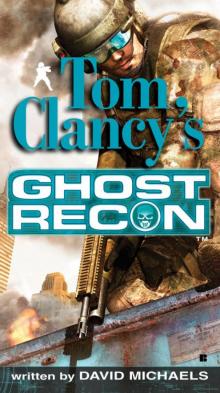 Ghost Recon gr-1
Ghost Recon gr-1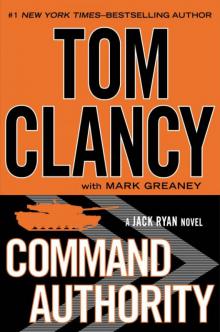 Command Authority jr-10
Command Authority jr-10 Tom Clancy's Power Plays 5 - 8
Tom Clancy's Power Plays 5 - 8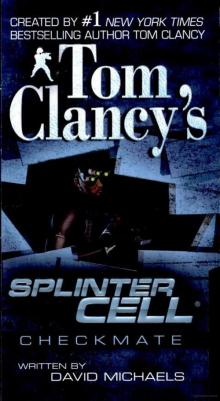 Checkmate sc-3
Checkmate sc-3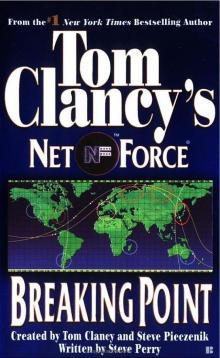 Breaking Point nf-4
Breaking Point nf-4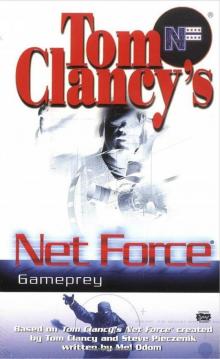 Gameprey nfe-11
Gameprey nfe-11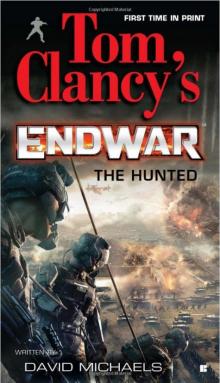 The Hunted e-2
The Hunted e-2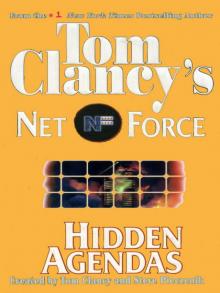 Hidden Agendas
Hidden Agendas Divide and Conquer o-7
Divide and Conquer o-7